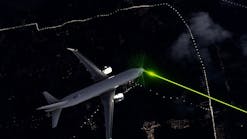The era of big data has ushered in an entirely new formula for understanding customers. According to IBM a staggering 90 percent of the data in the world today has been created in the last two years alone, presenting more ways than ever before to know the consumer.
Looking specifically at airports, data-driven decision making has become critical to business operations and key for uncovering new opportunities. The always-connected lifestyle of passengers contributes to a digital footprint in venues that allows airports to access data and provide strategic insights that can enhance the customer journey.
The airport tech scene now includes features such as beacons, wayfinding and apps, which push personalization via tailored navigation, concession recommendations and real-time flight updates. Data collected from a traveler’s mobile device powers these technologies, underscoring the importance of smart wireless networks that can securely uncover passenger behaviors.
Wireless networks can be a powerful asset for analysis and insight, but it can be easy to get lost in the sheer volume of data, leading one to ask, what is most important for long-term trending, real-time monitoring, and extracting strategic value. When turning to wireless technologies for data, focus on a combination of behavioral and operational insights. Here’s a quick overview for how these can benefit your business strategies:
- Behavioral Insights— Focus on the “who” of your venue by developing customer profiles based on network data, which can be handily developed into dashboards. What devices are connecting, drilling down into operating system, browser and manufacturer? What are customer preferences, including language settings, demographics, and interests?
Augment the profile data by aggregating types of usage. You’re likely to see Netflix, Hulu or Spotify combined with peak Mpbs, helping you to ensure your airport delivers speeds that accommodate these apps. For HD quality, Netflix recommends 5 Mbps bandwidth requirements; Hulu suggests 1.5 Mbps and Spotify is .3 Mbps.
- Operational Insights—The incredible demand for seamless connectivity not only calls for airports to offer Wi-Fi that features speed, density and coverage throughout the passenger journey, it also places added pressure on IT and operational teams to ensure the network is not compromised. Operational insights from a wireless network address how much data is consumed, length of user connects, and network load, across network components including circuits, switches, and access point by logically defined area, like a terminal or parking lot. Geo-plotting multi-dimensional attributes allows you to see pinpoints where users are congregating, whether it’s a popular concession stand, busy gate or check-in kiosks. This level of knowledge can be crucial for operation teams, as it helps your network planning team ensure the airport has a dense wireless infrastructure that can handle high passenger traffic with the right coverage.
To increase volumes of data as well as enhancing the overall customer experience, focus on Wi-Fi offload with Passpoint. Airports that include O’Hare, JFK, LAX and others have adopted offload technologies like Passpoint to switch travelers from cellular mobile networks to Wi-Fi, alleviating the extraordinary data pressures placed on cell towers and increasing data analytics opportunities. Passpoint is a new technology that makes offload at large public venues possible, seamlessly moving consumers to fast and secure Wi-Fi connections.
When it comes to the customer experience, data is king. Is your airport leveraging wireless networks to capture the right data and reap its benefits?
Scott Ewalt is vice president of product and customer experience at Boingo, where he is responsible for managing its commercial wireless product portfolio, including Wi-Fi, cellular, and Extended Network Services, across major airport venues and other verticals. He also oversees Boingo's “Customer 360” strategy, integrating qualitative and quantitative insights to enhance every touchpoint in the customer journey. His specialties include customer acquisition, data and analytics and e-commerce.
Prior to Boingo, Ewalt worked in digital marketing for Move Inc., the operator of Realtor.com, and in media planning on the Coca-Cola and McDonald’s accounts at ad agencies in Los Angeles and New York.
Ewalt holds an MBA from Pepperdine University’s George L. Graziadio School of Business and Management and a bachelor of arts from University of Southern California.


![Logo Notag Hex[1]x100 Logo Notag Hex[1]x100](https://img.aviationpros.com/files/base/cygnus/cavc/image/2020/10/logo_notag_hex_1_x100.5f9c63c6d8cae.png?auto=format,compress&fit=fill&pad=5&fill-color=white&q=45&h=139&height=139&w=250&width=250)


